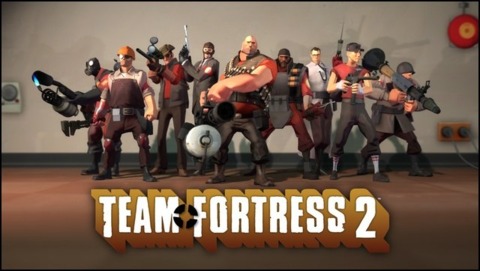Team Fortress 2 player base 5x larger post free-to-play switch
Gabe Newell details team-based shooter's uptick in traffic following monetization model changeup; Steam sales successful due to player base promotion.
Valve has been driving force in digital game sales over the past few years. Company cofounder Gabe Newell was at last week's TechNW: North to Innovation conference where he discussed the Team Fortress 2's successful conversion to the microtransaction model, the difference between free and free to play, and the elasticity of game pricing driving Steam's sales strategy.

According to GeekWire, Newell spent time talking about how the company's understanding of consumer trends is increasing. Team Fortress 2's recent shift to a free-to-play model provided Valve with insight into how audiences react to different pricing models.
The team-based shooter has seen a five-fold increase in its user base since going free to play, Newel said, an increase that other Valve titles offered free for a limited time never approached. He explained this disparity saying that free and free to play imply very different things, with the latter creating a sense of increased future value for the players.
Speaking to free-to-play conversion rates of players that go from experiencing the free content to those who spend money on in-game items, Newell said Team Fortress 2's rate is 10 times that of anecdotal numbers from partners at 20 to 30 percent. "We don’t understand what's going on," Newell said, "It's just an exciting time but also a very troubling time."
Newell also spoke to the pricing of titles and the affect it has on revenue. He characterized game prices as perfectly elastic. No matter the price of a game, the final revenue will remain the same with more or less purchases over time depending on the price point. This makes pricing decisions alone incapable of increasing revenue.
The seasonal sales that Steam is known for do bring in more revenue by a factor of 40, but this is time-shifted revenue, Newell said, expediting future purchases. The Valve cofounder said that despite the aforementioned elasticity in relation to revenue, the sales promotions work in a different way. Post-sale purchase numbers typically see a boost that put them higher than pre-sale numbers at the same price point, he said, adding that retail sales also see an increase showing the size of the player base as a more effective marketing tool than the lowered price during sales periods.
Fallout 4 Next Gen Update Comparison Stellar Blade - Hard Mode No Damage Gigas Boss Gameplay Stellar Blade - Hard Mode No Damage Abaddon Boss Gameplay Stellar Blade - (Almost) All Outfits Granblue Fantasy: Relink - New Content Trailer Modern Warfare III - New Season 3 Reloaded Modern Warfare Zombies Update River City Girls 2 - New Playable Characters DLC Reveal!! That Time I Got Reincarnated as a Slime ISEKAI Chronicles – Official Announcement Trailer MEGATON MUSASHI W: WIRED – Official OP “MUSASHI English Ver.” Trailer Gothic 1 Remake | Official Collector's Edition Trailer SaGa Emerald Beyond – Official Launch Trailer Paper Mario: The Thousand-Year Door – Official Switch Overview Trailer
Please enter your date of birth to view this video
By clicking 'enter', you agree to GameSpot's
Terms of Use and Privacy Policy
Got a news tip or want to contact us directly? Email news@gamespot.com
Join the conversation